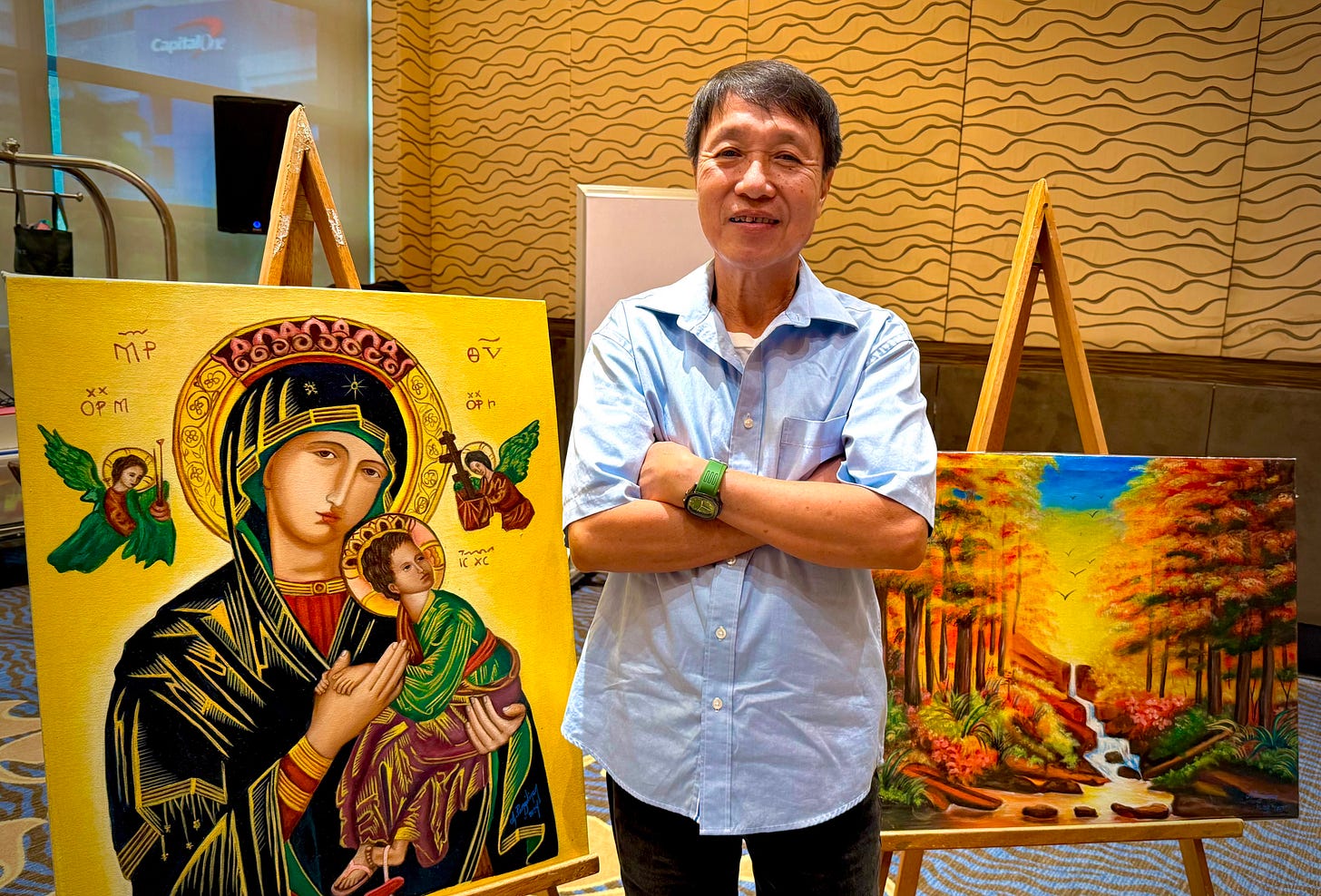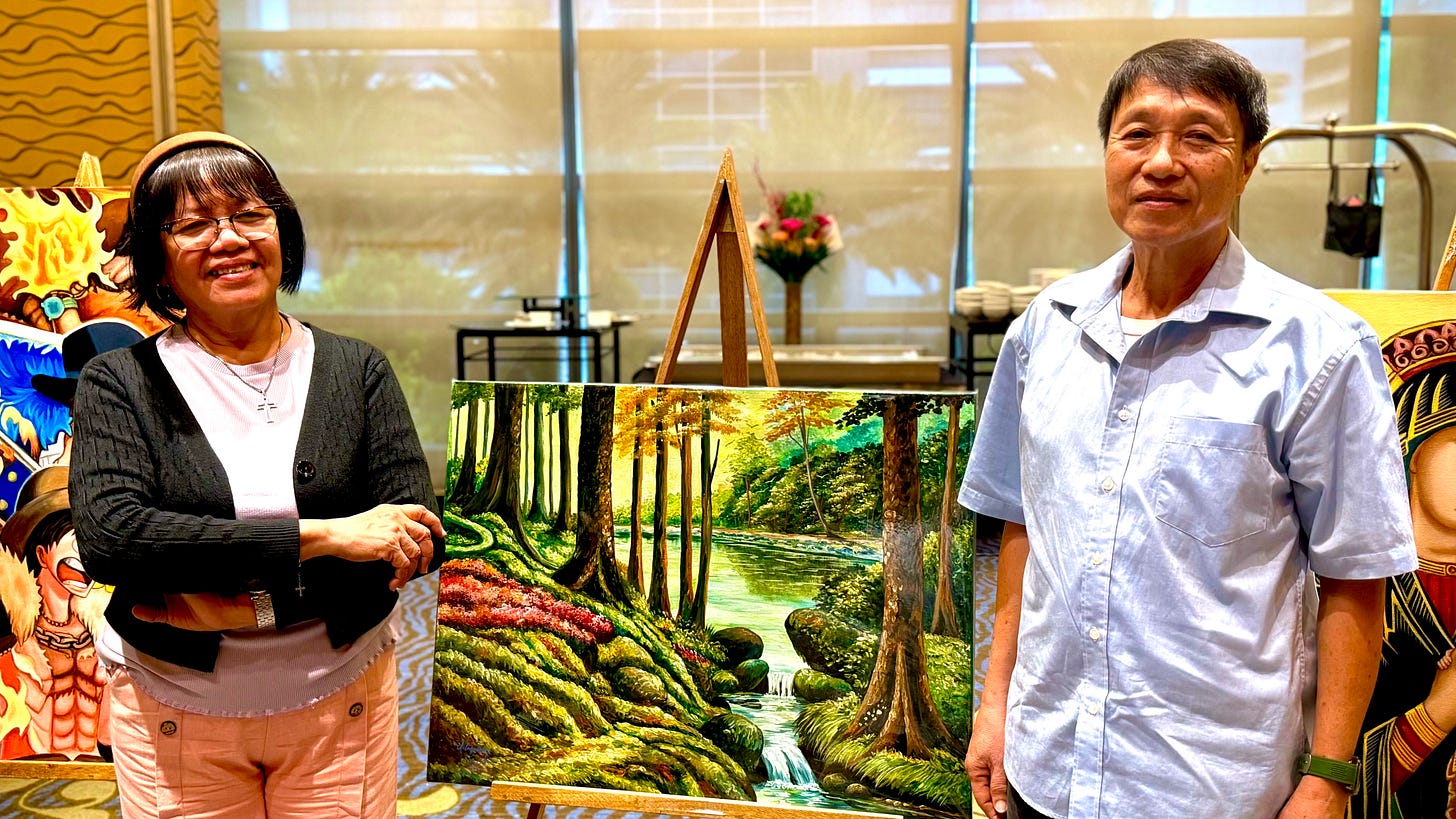
“As of now, we’re happy together”, says Dolores L. Pangilinan, who usually goes by Dolly. It’s a simple and understated way of summing up the journey she and her husband have been on over the previous three decades.
In January 2025, Dolly’s husband, Arturo de Guzman Pangilinan — known to friends and family as Art — walked out of prison a free man after almost 31 years incarcerated in the Philippines.
Art was arrested in 1994 for kidnapping for ransom. He doesn’t dwell on details. “I did it, I committed the crime,” he says matter-of-factly, a twinge of regret in his voice. Now a softly-spoken man in his mid-60s, he reflects on what he’s been through: from being arrested and sentenced to death, to finding God, learning how to paint and eventually regaining his freedom.
In turn, Dolly — who affectionately calls Art by the pet name “Papa” — tells the story of how she went from a humble housewife to a single mother and anti-death penalty activist.
Life on death row
In 1987, the Philippines became the first Asian country to abolish the death penalty. The new Constitution, drafted after the People Power Movement ended the rule of Ferdinand Marcos Sr., prohibited the use of capital punishment but allowed for the possibility of Congress reinstating it for “heinous crimes” if there were “compelling reasons”.
In 1993, capital punishment was reintroduced under the administration of President Fidel V. Ramos. Executions, carried out by lethal injection, resumed six years later under President Joseph Estrada.
Art was sentenced to death in 1998. His parents, who don’t speak English, couldn’t understand what had been said in court. It fell to Dolly, herself struggling to come to terms with the sentence, to explain to her in-laws that Art was going to be on death row. And then there was the gut-wrenching task of breaking the news to the children: at the time, their son was 10 years old, their daughter only five.
Art says he was scheduled for lethal injection nine times; it was only due to his lawyer’s court appeals that he avoided execution. He’d seen how other prisoners had been taken away for execution; how they couldn’t walk to the execution chamber themselves.
The night before his first scheduled execution, he lay down and prayed to God: “Please, take me now, because I cannot go there [for] lethal injection […] Take me now; if You don’t get me tonight, I will not be put to death and You will use me.”
Outside prison, Dolly became active in the anti-death penalty movement — not just advocating for her husband but also for other death row inmates. She joined an organisation made up of families of death row prisoners, consistently showing up to meetings and activities. When the former president stepped down, Dolly took up the mantle to lead the group.
In April 2006, President Gloria Macapagal-Arroyo commuted the death sentences of over 1,200 death row prisoners — including Art. A couple of months later, the Philippines abolished the death penalty for the second time. Art’s death sentence was changed to reclusión perpetua, a sentence of imprisonment for at least 20 years and one day to a maximum of 40 years.
‘My wife and me support life’
As his years in prison went on, Art began training to be a painter, studying and refining his craft for five years. He credits his religious faith and his family for getting him through this time: “The 30 years and 10 months I was in prison, they supported me.”
“My family, my daughter, my son — they gave me material for painting while I was studying to be an artist. That’s why I graduated.”
Five months after his release, Art is still readjusting to life outside prison. He worries about not living up to his family’s expectations and continues to feel overwhelmed in everyday situations — though he says he always looks to Dolly for support during such times.
Art’s paintings were on show at the Anti-Death Penalty Asia Network’s (ADPAN) regional conference in Manila in June. Despite the trauma of everything they’ve been through, Art and Dolly remain active in the anti-death penalty movement. Their continued presence and efforts are important; over the years, there have been attempts to bring the death penalty back in the Philippines. It’s a reminder that, even in abolitionist states, vigilance is necessary. “I feel — when I was on death row — God doesn’t like the death penalty,” Art says.
“God likes the reformation of the inmates. My wife and me […] support life, that’s why we are here.”
Art and Dolly’s story — which spans decades of unimaginable hardships — is one of unshakeable love and commitment. I’ve been working as a journalist for over a decade, and this interview was one of the most emotional I’ve ever conducted.
“I thank Papa that he changed his life, especially when God gave him talent [for painting],” Dolly said at the end of the interview. “I’m still hoping we live together for a long time.”
“I thank God, because God gave to me my wife,” Art said in response. “Thank you for the very long time [you have waited for me].”














